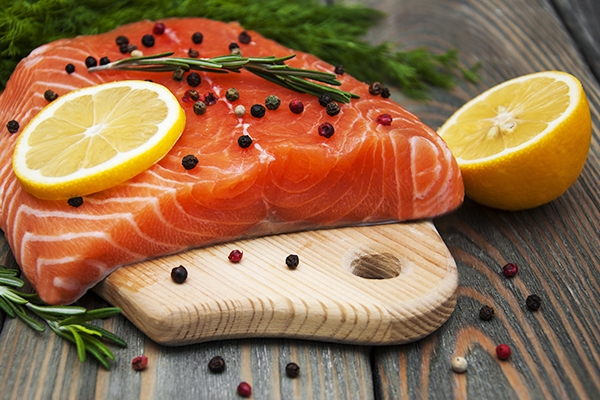Let’s Eat Fish!

Do you still remember this song? "Nenek moyangku seorang pelaut, gemar mengarung luas samudra …." (My ancestors were sailors, fond of sailing across the vast ocean....) This song was created for a reason. Yup, more than half, or around 70%, of Indonesia's territory is ocean. Its land area is only 30%.
Indonesia is rich in marine products, particularly fish, due to its large sea. Despite its abundance, fish has become one of the most important export commodities for increasing the country's foreign exchange.
From January to November 2022, the value of fishery exports reached USD 5.71 billion. Exports are made to countries such as the United States, China, and Japan.
Surprisingly, in this fish-rich country, the population's consumption of fish is low. According to Food and Agriculture Organization data for 2020, Indonesia ranks sixth among the eight ASEAN countries in terms of fish consumption.
In 2021, Indonesia's per capita fish consumption will be 55.37 kg, while Japan's will be 140 kg. As a result, the government intends to raise fish consumption to 58 kg per capita per year by 2022.
Maluku is the province with the highest per capita fish consumption, at 77.49 kg per year. Aceh and Gorontalo have the lowest fish consumption rates among the ten provinces, at 66.21 kg per capita per year and 65.54 kg per capita per year, respectively.
The Ministry of Marine Affairs and Fisheries data for 2021 show that fish consumption in Indonesia is uneven. As a result, the Directorate General of Marine and Fisheries Product Competitiveness (PDSKP) is stepping up its Gemarikan campaign in 34 provinces. Nutrition and stunting-prone areas are the focus.
Low fish consumption in Indonesia is thought to be caused by a lack of understanding of the nutritional value and protein in fish for health and intelligence, as well as a limited supply of fish to inland areas. Another factor is the growing concern that fish contain harmful substances like mercury, pesticides, and other toxic substances.
Why do we need to eat fish?

Fish is high in protein and omega-3 fatty acids. Consuming fish is therefore beneficial to your waistline because it keeps your body lean and your muscles strong.
1. High in essential nutrients for the body
Fish is healthier than chicken and beef. It has omega-3 fatty acids, iodine, selenium, fluoride, iron, magnesium, zinc, taurine, and coenzyme Q10. Furthermore, fish has a higher protein content as well as omega-3 and omega-6 levels than other types of meat.
2. Reduces the risk of heart attack and stroke
The American Heart Association recommends eating fish at least twice a week. Omega-3 fatty acids help to lower blood triglycerides and blood pressure, as well as blood clotting and the risk of stroke.
Consuming fish such as salmon, mackerel, and herring is also beneficial in preventing the development of Alzheimer's, dementia, and diabetes due to their high DHA content.
3. It contains important nutrients for fetal growth
Low-mercury fish, such as salmon, sardines, and trout, are high in omega-3. Docosahexaenoic acid (DHA) is an omega-3 fatty acid that is essential for brain and eye development.
As a result, pregnant and nursing women are advised to consume no more than 340 grams of salmon and other oily fish per week. Consuming raw fish can be harmful to the fetus.
4. Helps prevent and treat depression
Depression is a common mental illness. Depression is currently one of the world's most serious mental health issues. Consuming fish, according to several studies conducted by the National Center for Biotechnology Information, can reduce depression.
Fish omega-3 fatty acids aid in the treatment of depression and improve the efficacy of antidepressant medications.
5. Reduces the risk of autoimmune diseases
Autoimmune diseases occur when the immune system mistakenly identifies healthy body tissue. The content of omega-3 fatty acids, vitamin D, and fish oil can reduce the risk of autoimmune diseases.
6. An excellent source of collagen
Fish contain good amino acids. Collagen from fish provides many health benefits compared to collagen from land animals. If you want to get collagen from fish, consume the fish with its skin. Most fish collagen comes from their skin and bones.
7. A source of bone-forming nutrients
Fish, which is high in vitamin D and calcium, provides nutrients for bone growth. Oily fish is the best source. Salmon and sardines have small bones but are high in calcium.
Good fish to eat

Not all fish are beneficial to humans. There are some things to consider before eating fish. For example, the fish habitat is not contaminated with heavy metals. The fish is also fresh; it does not smell fishy, the flesh is still firm, the tail is not dry and blackened, and the eyes are not red.
Avoid buying fish stacked with other seafood, such as crabs and clams. Cross-contamination is caused by this treatment. Fish are also susceptible to harmful chemicals in the water, such as mercury and PCBs (polychlorinated biphenyls), as well as the food they consume.
Pregnant women should avoid eating mercury-containing fish. Mercury interferes with both the growth of metal gases and the growth of babies and children. Meanwhile, PCBs cause cancer and are hazardous to one's health.
Returning to the issue of stunting, fish is high in nutrients that promote health and intelligence. It could be one of the solutions to Indonesia's malnutrition or stunting problem. Consuming fish boosts immunity and contributes to the golden generation by 2045.
If you experience health problems after consuming fish, click Consult on WhatsApp.



